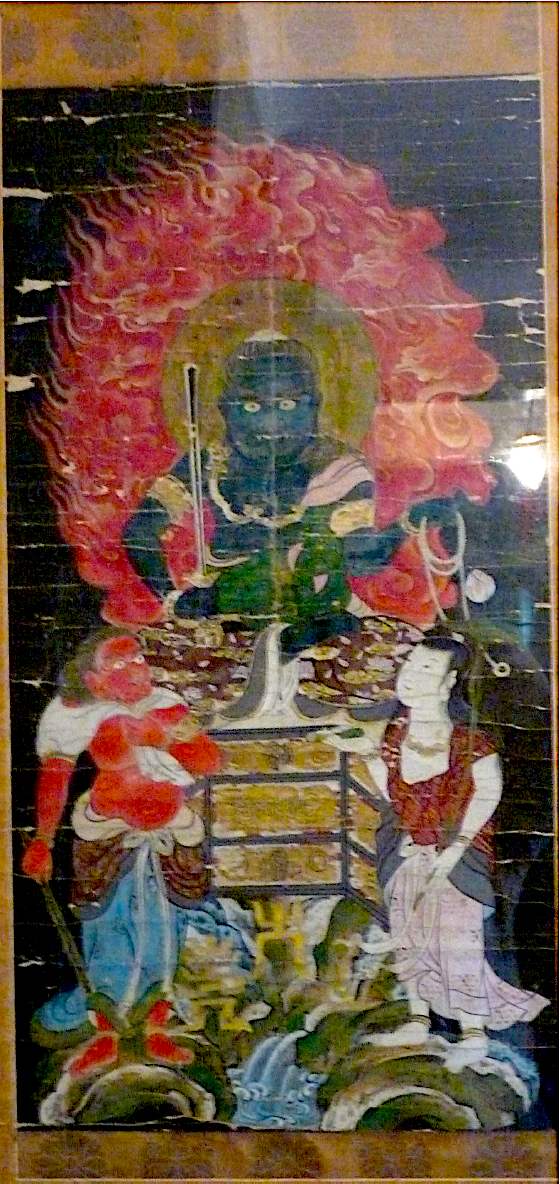Acala
Acala (‘immovable one’) is a guardian deity primarily revered in Tantrism and other forms of esoteric Buddhism. The wrathful manifestation of the Wisdom Buddha Mahavairocana, he is classed among the Five Wisdom Kings of the Womb Realm, who are in turn the protectors of the Five Wisdom Buddhas.
Though depictions of Acala vary, certain aspects are fixed by scriptural sources, chief among them the Mahavairocana Tantra. His face is expressive of extreme wrath, wrinkle-browed, left eye squinted or looking sideways, lower teeth biting down the upper lip. He has the physique of a ‘corpulent child.’ He bears a sword in his right hand, and a lariat or noose in his left. He is engulfed in flames and seated on a stone base.
Acala is said to be a powerful deity who protects All-the-Living by burning away all impediments and defilements, thus aiding them towards enlightenment. Wisdom Kings are viewed as the guardians of Buddhism, and according to the esoteric doctrine of the Three Wheels, whereas Buddhas represent pure concepts and bodhisattvas teach through compassion, Wisdom Kings are the embodiment of the wheel of injunction and teach through fear, shocking nonbelievers into faith.
Originally the Mahayana Budddist deity Acalanātha, whose name in Pali and then in Sanskrit combines the terms ācala ('immovable') and nātha' ('protector'), Acala was incorporated into esoteric Buddhism in the late 7th century as a servant of Buddha. In Tang Dynasty China, he became Budong ('immovable'). In turn, the deity was imported into Japan as Fūdō by the monk who founded the Shingon sect of Japanese Buddhism.
As the deity's importance waned in India and China, the iconic image remained popular throughout the middle ages and into modern times in Nepal, Tibet and Japan, where artistic representations of Acala are most often found.
Crushed pigment on paper; 59 x 28cm.
Nelson South East Asia Collection © 2025
